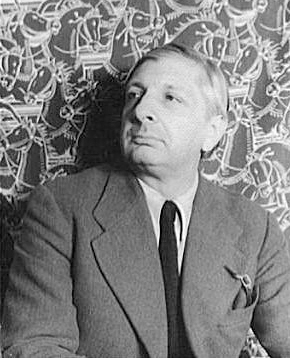
Marino Marini was an Italian sculptor and educator.

Giuseppe Maria Alberto Giorgio de Chirico was an Italian artist and writer born in Greece. In the years before World War I, he founded the scuola metafisica art movement, which profoundly influenced the surrealists. His best-known works often feature Roman arcades, long shadows, mannequins, trains, and illogical perspective. His imagery reflects his affinity for the philosophy of Arthur Schopenhauer and of Friedrich Nietzsche, and for the mythology of his birthplace.

The Piazza di Spagna is a square in the centre of Rome, the capital of Italy. It lies at the foot of the Spanish Steps and owes its name to the Palazzo di Spagna, the seat of the Embassy of Spain to the Holy See. The Column of the Immaculate Conception is in the square.

Bruno Munari was "one of the greatest actors of 20th-century art, design and graphics". He was an Italian artist, designer, and inventor who contributed fundamentals to many fields of visual arts in modernism, futurism, and concrete art, and in non-visual arts with his research on games, didactic method, movement, tactile learning, kinesthetic learning, and creativity. On the utility of art, Munari once said, "Art shall not be separated from life: things that are good to look at, and bad to be used, should not exist".

The Galleria Nazionale d'Arte Moderna e Contemporanea, also known as La Galleria Nazionale, is an art museum in Rome. It was founded in 1883 on the initiative of the then minister Guido Baccelli and is dedicated to modern and contemporary art.

Metaphysical Interior with Biscuits is a 1916 painting by Italian metaphysical painter Giorgio de Chirico. It is one of the earliest editions in a series of works that extended late into Chirico's career.

Michele Cascella was an Italian artist. Primarily known for his oil paintings and watercolours, he also worked in ceramics, lithography, and textiles. He exhibited regularly at the Venice Biennale from 1924 until 1942, and his works are owned by major museums in Italy and Europe, including Victoria and Albert Museum in London, Galerie nationale du Jeu de Paume in Paris, and Galleria Nazionale d'Arte Moderna in Rome.

Rodolfo Siviero was an Italian secret agent, art historian and intellectual, most notable for his important work in recovering artworks stolen from Italy during the Second World War as part of the 'Nazi plunder'.

Antonio del Massaro da Viterbo, or Antonio da Viterbo, nicknamed il Pastura was an Italian painter.
Antonio Bueno was an Italian painter of Spanish origin, who acquired Italian citizenship in 1970. He was born in Berlin while his journalist father was posted there by the newspaper ABC of Madrid.

The Museo del Novecento is a museum of twentieth-century art in Milan, in Lombardy in northern Italy. It is housed in the Palazzo dell'Arengario, near Piazza del Duomo in the centre of the city.
The Prodigal Son is a painting by the Greek-born Italian artist Giorgio de Chirico. It is painted in tempera on canvas and was completed in 1922 as de Chirico was in transition from the Metaphysical style of his earlier works to the neoclassicism he essayed in the 1920s. The biblical subject matter is interpreted by de Chirico as a stone effigy of a father placing his hand on the shoulder of a mannequin representing the son. The dimensions of the painting are 87 by 59 centimeters. It is housed at Museo del Novecento, Milan, Italy.

The Galleria Comunale d'Arte Moderna is the museum of modern and contemporary art of the city of Rome, Italy. It is housed in a former Barefoot Carmelite monastery dating from the 17th century and adjacent to the church of San Giuseppe a Capo le Case, at 24 Via Francesco Crispi.

Franco Diogene was an Italian actor and comedian.
Gloria Porcella is a curator, writer, and art critic.

Enzo Carnebianca, is a sculptor and painter born in Rome Italy.

Raissa Samojlovna Calza was a Ukrainian dancer who became a prominent classical archaeologist of Roman portraiture. When she was young, she fled to Italy and France following the Russian Revolution.
Roberto Montanari was an Italian painter. Known as “El Pintor de Los Toros,” he painted mostly Spanish bulls and landscapes and he was a pupil of Salvador Dalí. He held over 300 exhibitions. In 1970, 1971 and 1972 he exhibited with Pablo Picasso and Salvador Dalì.

Silvio Benedicto Benedetto is an Argentine painter and sculptor naturalized Italian.
















